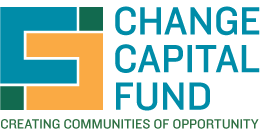St. Nicks Alliance Successful CCF Pilot Gets Funding to Serve More Children
Three years ago, with the help of a long-term investment by the Change Capital Fund collaborative of donors, St. Nicks Alliance undertook an ambitious effort to ameliorate poverty through three pathways: housing, employment and education.
St. Nicks Alliance has made considerable progress on all three fronts. They helped approximately 305 households avoid illegal evictions, created 162 units of new affordable housing, and trained and placed 140 people into jobs. But perhaps their greatest impact has been in improving education outcomes among local students.
In recognition of their success, St. Nicks Alliance, in partnership with School District 14, was awarded $880,000 annually for five years from the NYS Education Department’s 21st Century Community Learning Center.
“We successfully adapted community based school partnership to produce measurable student improvement and academic success,” says Executive Director Michael Rochford. Since the project was launched, 700 children have improved school outcomes.
Moreover, St. Nicks Alliance’s innovative Transformational Coaches, an approach that provides intensive and comprehensive supports to individual clients, has made huge strides in helping the most at-risk students, who are referred for services by their schools. “Using data and tracking progress towards outcomes, we have proven that our Transformational Coaching approach works as measured in the outcomes achieved by children receiving intensive services and strong partnerships with the schools’ principals,” continued Rochford.
Center for Economic Opportunity Announces New Name, Releases Latest Poverty Data at Forum on Using Evidence and Innovation to Reduce Poverty
[space_20]
Center for Economic Opportunity is now the Mayor’s Office for Economic Opportunity (NYC Opportunity).
[space_20]
Mayor de Blasio formed NYC Opportunity with the merger of the Center for Economic Opportunity, which was created in 2006 as a municipal innovation lab to launch and assess anti-poverty interventions, and HHS-Connect, which was established in 2008 to support more effective health and human service delivery with technology and data-sharing tools.
[space_20]
NYC Opportunity uses evidence and innovation to reduce poverty and increase equity. Its work includes analyzing existing anti-poverty approaches, developing new interventions, facilitating the sharing of data across City agencies, and rigorously assessing the impact of key initiatives. NYC Opportunity manages a discrete fund and works collaboratively with City agencies to design, test and oversee new programs and digital products. It also produces research and analysis of poverty and social conditions, including the annual Poverty Measure, which provides a more accurate and comprehensive picture of poverty in New York City than the federal rate.
[space_20]
[space_20]
NYC Opportunity recently hosted a forum on poverty, Using Evidence and Innovation to Reduce Poverty and Inequality, where Mayor Bill de Blasio and Ford Foundation President Darren Walker discussed strategies for reducing poverty and inequality. A follow-up panel, including Deputy Mayor for Strategic Policy Initiatives Richard Buery, Deputy Mayor for Health and Human Services Herminia Palacio, and Commissioner of the NYC Department of Housing Preservation and Development Maria Torres-Springer, Gordon Berlin, President, MDRC, and Cecilia Muñoz, Vice President of Policy and Technology and Director of the National Network at the New America Foundation and former Director, White House Domestic Policy Council, 2012-2017, discussed poverty and evidence at the local and national levels.
Video of the full event is available
here.
[space_20]
Also at the event, First Deputy Mayor Anthony Shorris presented the latest NYCgov Poverty Measure (formerly the CEO Poverty Measure), covering the years 2005-2015. Highlights:
· The news is good: there is a significant one-year decline in the near-poverty rate from 45.1 to 44.2 from 2014-2015.
· The percentage of New Yorkers in actual poverty fell to 19.9% from 20.7% over the two-year 2013-2015 period.
· Many groups also saw significant declines in rates of at or near poverty from 2013-2015, including: single parents with children; working age adults; seniors; Blacks, Hispanics and Non-Hispanic Whites; high-school educated.
Read the full report
here.
Donor News
Chase and Citi Community Capital are sponsoring a forum on “poverty and its spatial concentrations” on June 7th, 2017. NYU Furman Center will release its State of New York City’s Housing and Neighborhoods in 2016 report at the event. More information available
here.
[space_20]
LISC NYC has brought two essential goals of health and affordable housing preservation together in their Two Shades of Green (TSG) program. Through TSG organizations have implemented energy and water efficiency retrofits, fostered active design, adopted healthier approaches to pest management and cleaning, and made their buildings smoke-free. These changes have reduced asthma triggers, increased physical activity, and saved on energy costs. Learn more
here.
[space_20]
LISC NYC and Enterprise Community Partners, in partnership with the NYC Department of Housing Preservation and Development, the NYC Housing Development Corporation, and Energy Efficiency for All, has launch the Integrated Physical Needs Assessment (IPNA). The IPNA will be used by city and state agencies for projects receiving government financing to rehabilitate their buildings. Owners will use this tool to assess their buildings’ needs, and identify interventions to improve energy efficiency and building environments to have a positive impact on residents’ health. Learn more
here.


